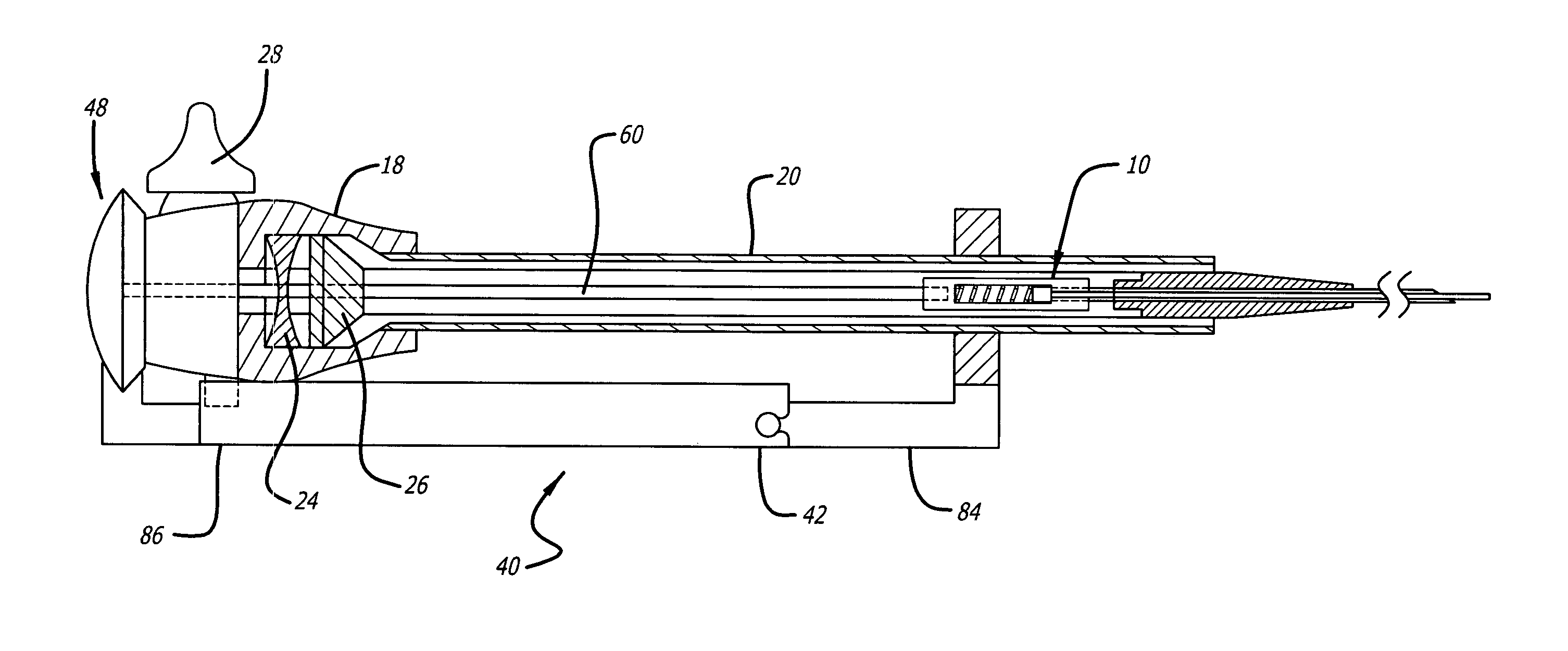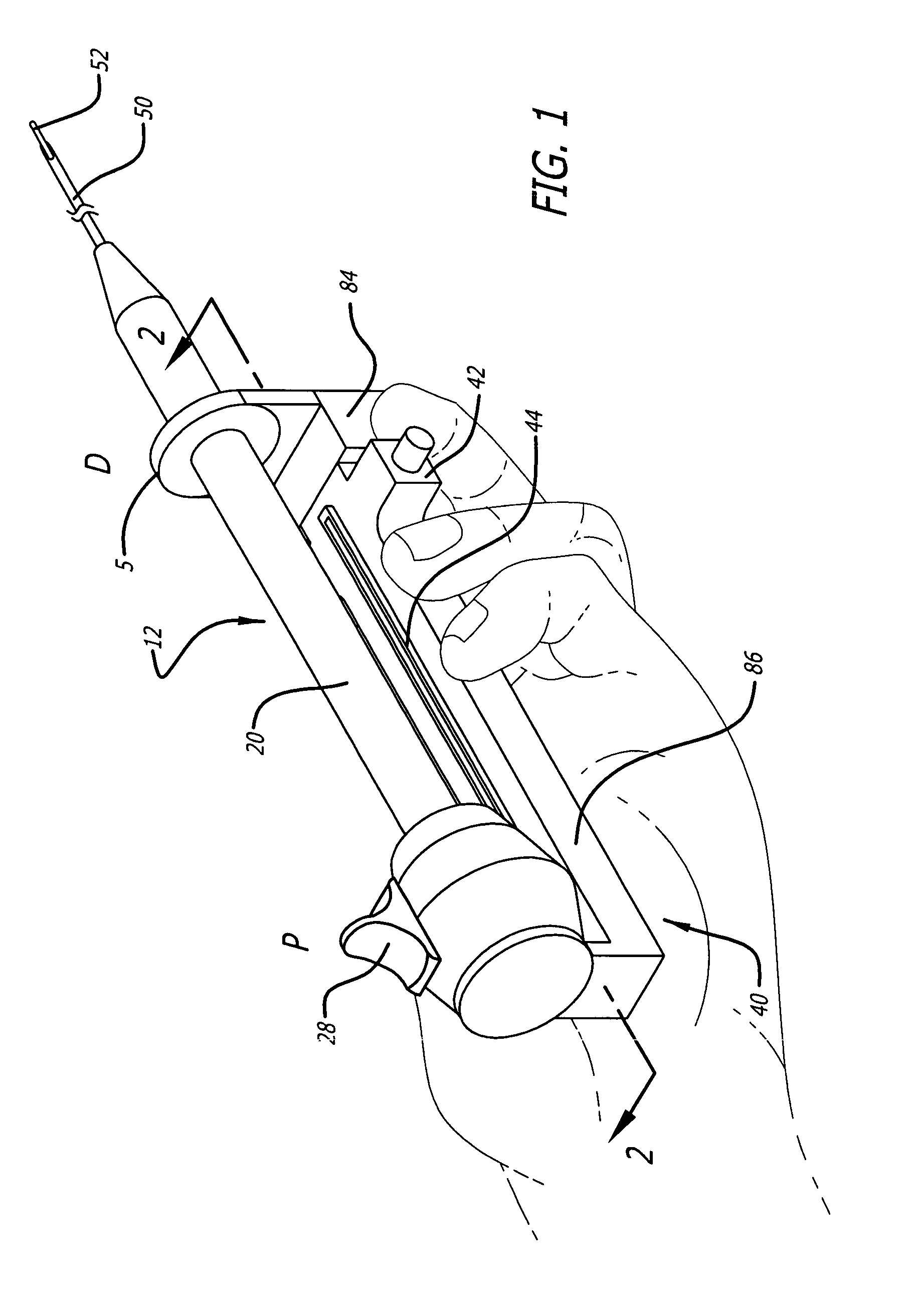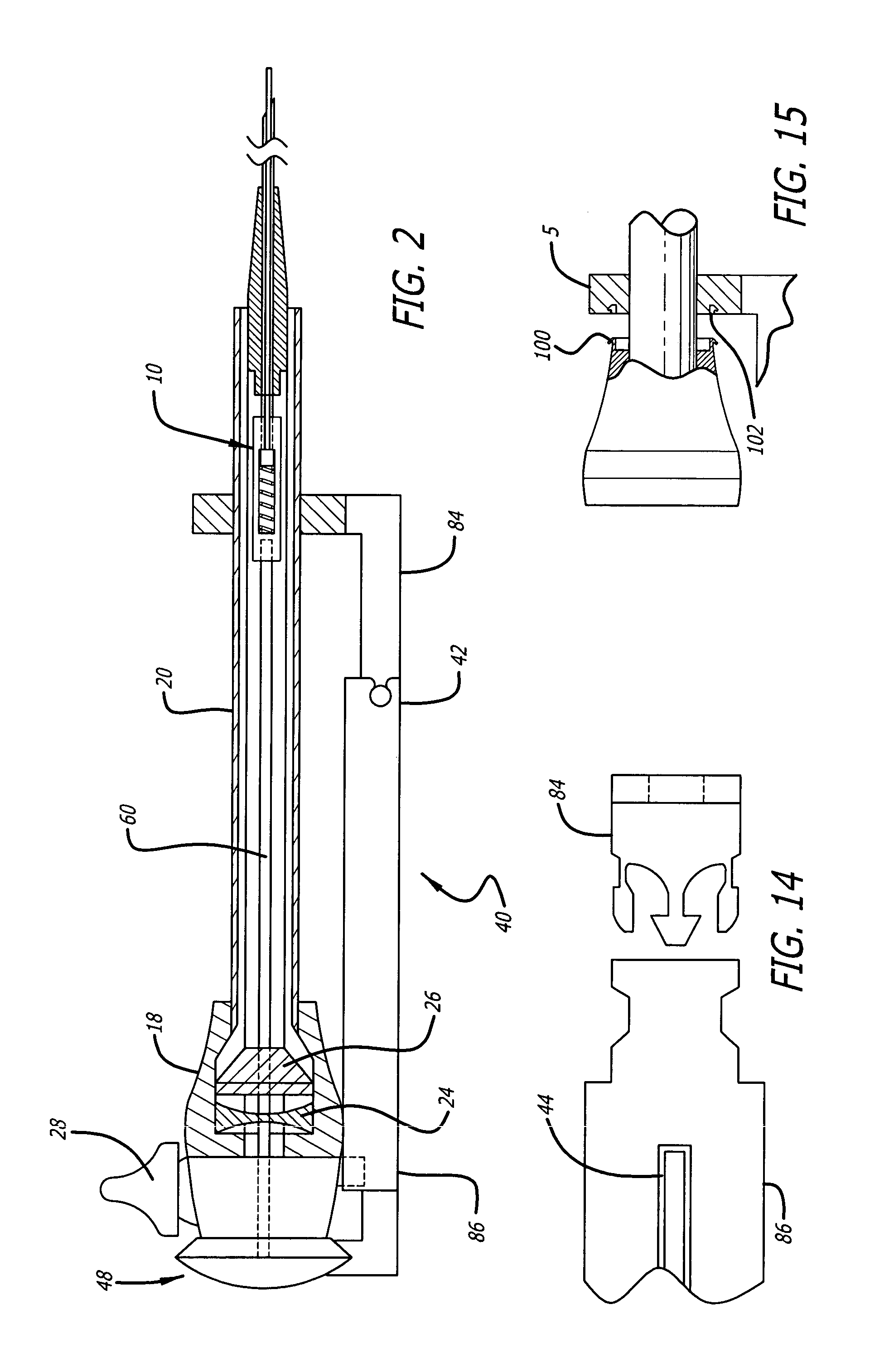Tunnel port apparatus with serial gas-check assembly
a tube apparatus and serial technology, applied in the field of catheter and tube apparatus surgical placement, can solve the problems of threatening the functionality of the catheter, flow obstruction, and hernia formation, and achieve the effects of reducing the risk of infection
- Summary
- Abstract
- Description
- Claims
- Application Information
AI Technical Summary
Benefits of technology
Problems solved by technology
Method used
Image
Examples
Embodiment Construction
[0041]Now turning to FIG. 1, an exemplary tunnel port apparatus is depicted being held by an operator in an exemplary grip. Components of the apparatus comprise a guideneedle assembly 10 (not shown, see FIGS. 2 and 6) with overlying port cannula 12 in conjunction with a support frame 40. Support frame in this embodiment has a proximal frame portion 86 and a distal frame portion 84, which has an apertured portion 5 that supports the hollow tube 20 of port cannula 12. The guideneedle assembly 10 and port cannula 12 are designated to have a proximal end (P) that is oriented toward the operator of the apparatus and a distal end (D) that is oriented toward a subject, such as an animal, including humans.
[0042]The port cannula 12 comprises a proximal valve apparatus 18 and a distal hollow tube 20 (FIGS. 2 and 3). The valve apparatus 18 comprises a channel passage 17 inline with the axis of the lumen 21 of the distal hollow tube 20. The valve apparatus 18 comprises a perforated elastic memb...
PUM
 Login to View More
Login to View More Abstract
Description
Claims
Application Information
 Login to View More
Login to View More - R&D
- Intellectual Property
- Life Sciences
- Materials
- Tech Scout
- Unparalleled Data Quality
- Higher Quality Content
- 60% Fewer Hallucinations
Browse by: Latest US Patents, China's latest patents, Technical Efficacy Thesaurus, Application Domain, Technology Topic, Popular Technical Reports.
© 2025 PatSnap. All rights reserved.Legal|Privacy policy|Modern Slavery Act Transparency Statement|Sitemap|About US| Contact US: help@patsnap.com



